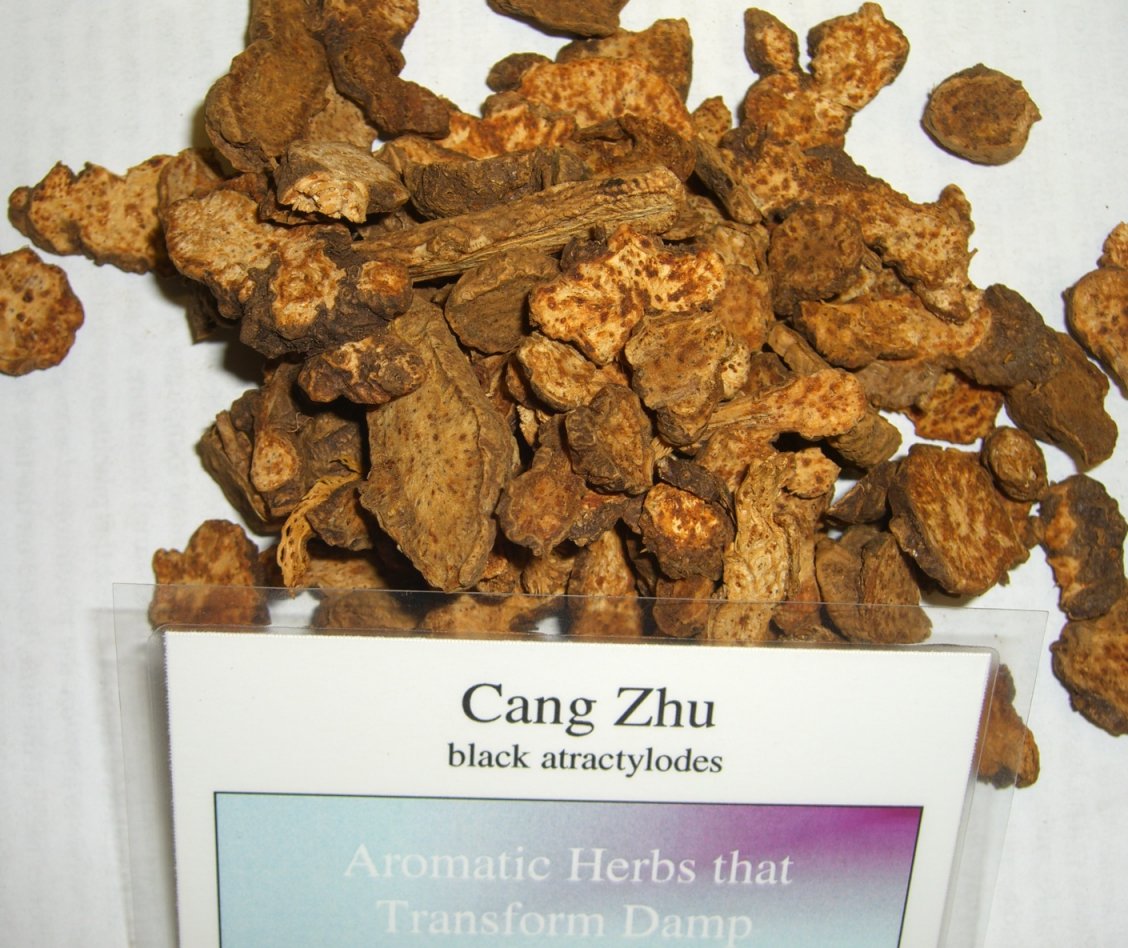Cang Zhu

  | Cang Zhu in TCM:Explore the properties of Cang Zhu according to Chinese
Nutrition and Traditional Chinese Medicine (TCM):
Factoids:
English Name: atractylodes chinensis; a. lancea, black
atractylodes
Pharmacuetical Name: Rhizoma Atractylodes
Properties: acrid, bitter, warm aromatic
Temperature: warm
Channels: ST, SP
Flavors: aromatic, bitter, pungent
Special Properties:
disperses cold, clears heat, clears damp, disperses wind, alleviates bi syndrome
Actions / Indications:
- Dries Dampness; Revives Spleen (abdominal and epigastric
distension, fullness nausea, vomit, poor appetite, thick, sticky tongue
coat)
- Expels wind-damp (for painful obstruction: bi syndrome
due to wind-damp-cold)
- Clears dampness in the lower jiao (damp-heat pouring
downward; leg qi, leucorrhea, dysenteric disorder)
- Induces sweating; releases exterior (wind-damp-cold
headache, body aches, no sweating; also for damp-warm febrile diseases
due to damp turbidity)
- Improves vision (night blindness or diminished vision
with rough sensation in eyes)
Special Notes:
- Cang Zhu is known for having 4 functions
for damp)
- Cang Zhu has a diuretic effect, and should be used with caution for
diabetic patients.
Contraindications:
- (cc: pregnancy)
- (cc: yin deficiency)
Disclaimer: In accordance with our terms of service, by using this web site you agree that none of the information found on this web site constitutes medical advice. You should always consult your doctor before trying any particular food or herbal remedy to treat disease.
Folk remedies presented on this site are designed to address specifc TCM diagnoses, and are not one-size-fits-all. If you would like to learn more about Traditional Chinese Medicine (TCM) and how it relates to Chinese Nutrition, you can book in a free call with a licensed professional. There is no obligation to purchase.
[CLICK HERE for your free INITIAL CONSULTATION] |

